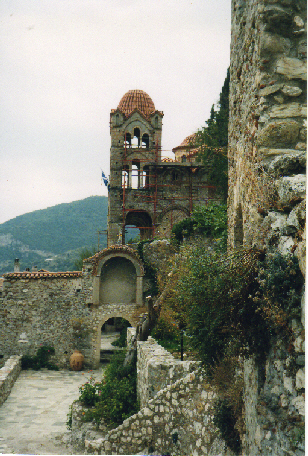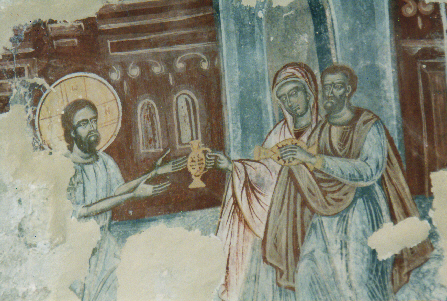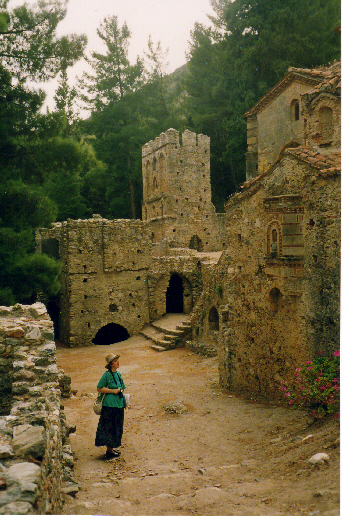Journey through Ancient GreeceMystra

Journey through Ancient Greece |
 |
As well as being politically important during the Byzantine period Mystra was the focus for a cultural renaissance with a wealth of magnificent building and decorative art. Then in 1460 the despot Demetrius surrendered the city to the Turks, and many of the churches became mosques. Mystra was occupied by the Venetians 1687-1715. There were further wars, uprisings reprisals and general mayhem until Greece was liberated. |
 |
There are spectacular views from the 13th century citadel which is a steep climb above the upper entrance. |
 |
The Perivleptos Monastery a tiny church built into the rock, contains the most superb and complete cycle of 14th C frescoes of all those at Mystra. |
 |